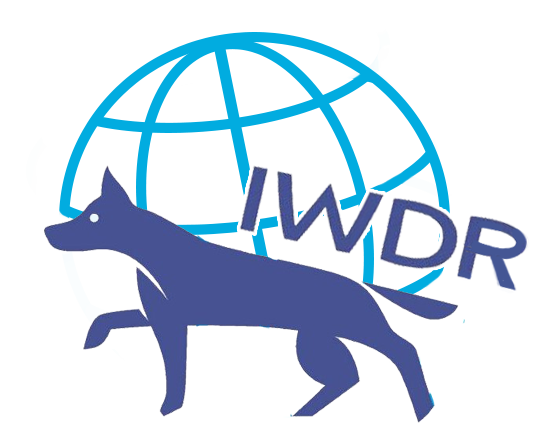Early Socialization - Weeks 1 & 2 - 0-14 Days
![]() TIP: Click the quick-links above to go directly to each section. You can also click the anchor icons at each section to return to the top of the page.
TIP: Click the quick-links above to go directly to each section. You can also click the anchor icons at each section to return to the top of the page.
Quick Reference Guide:
Goal:
Begin building positive associations to the world! Introduce passive sounds, surfaces, novel objects &body handling to begin building pup’s resilience.
Environments:
Whelping box or room that the litter is housed. Interactive activities can be done in a separate clean room.
Volunteer Type:
Experienced or staff only (note brood’s comfort levels)
Introduction
During these first weeks of life the pups are introduced to this world that they will share with humans. Pups enter this world as blank canvases and our job is to provide a den that is both interesting and challenging.
The pups’ sense of touch and scent are beginning to develop during the first two weeks. A few additions to the den can help create a solid foundation to the start of puppies’ early socialization. A den that provides many scents, textures and movements/vibrations will start to fill in the blank canvas. The pups will start to build up a memory bank of positive experiences and associations around many different things.
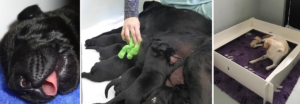
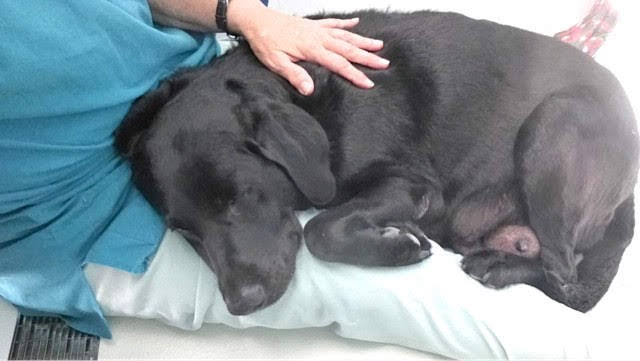
- Pup is accepting of handling without wiggling, yawning or huffing.
- Pup is accepting of its environment without overreacting.
- Brood is happy and settled while humans interact with her pups.
- As they begin to move about more, puppies explore and interact with the items and are comfortable in a new environment.
- Monitor both puppies’ and broods’ body language: be prepared to stop, re-assess and build up again if the puppy is uncomfortable.
- Keep it brief: start slowly and build up: start with one minute. More does not produce better results – quality over quantity.
- Keep your objective in mind: pups will develop positive associations to body handling, build handler engagement, and experience different textures from materials like the scales, staff scrubs and the whelp mat.
- Allow the puppy an escape route at all times: At this age pup will communicate by trying to move away. Place the puppy back with its mother for comfort and try again later.
- As puppies’ eyes and ears open, they will begin to notice their environment. Watch as their motor skills continue to improve and puppies are able to explore and interact with their world.
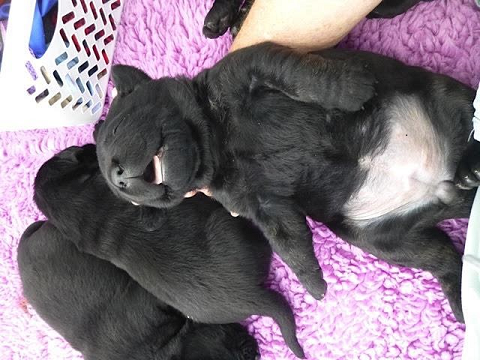
Problem Solving
- Has time been spent with the Brood prior to her Whelping in order to build up positive associations? Pre-whelp is a good time to massage the Brood especially around her side and towards her glands where pups will feed. Relaxation music can be helpful as well as introducing the Brood to the initial sounds her pups will experience once their ears open.
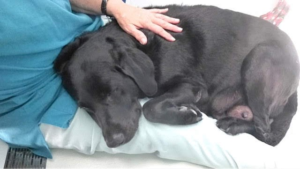
- Look at protocols used in handling.
- Are pups touched prior to being lifted off ground for weighing?
- Ensure all staff move pups slowly and absolutely no flying quickly through the air.
- Ensure that the massage is no longer than 1 minute. Reduce time then slowly build up again.
- Place another pup next to the pup being massaged for a familiar scent.
- Use a small piece of whelping mat that has been left under puppies. Familiar scent will be on the massage whelping mat.
Encourage mom to come near the puppies and interact with the items. If puppies continue to show stress signs, return puppies to their den with Mom and try a shorter amount of time next time.
Passive Environmental Enrichment
Our goal is to begin to slowly introduce passive sounds, surfaces, and novel objects. Begin to introduce age-appropriate environmental enrichment and one different environment. We also want to continue to make body handling a positive experience.
In preparation for when the puppies’ ears open up, prepare the brood so she is familiar with different sounds, as well as sounds coming from different directions.
Music- Think variety. Jazz, Classical, Country, Weather, etc. Music can be played quietly on a radio, or computer in the same room as the whelping box for half an hour per day. Safe objects that make noise can also be placed in the whelping box. If Mom is uncomfortable with items or will chew items up, only place them in the den under supervision for a short period of time.
Different surfaces can be added to the whelping box for an hour each day as long as the Mom is comfortable with the objects and will still continue to take care of the puppies.
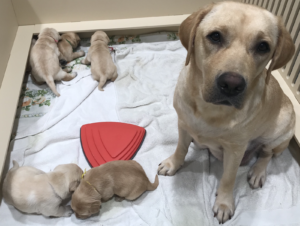
Fabric around the edge of the whelping box will enable passive desensitization. Remove the fabric at night if the den is not supervised.
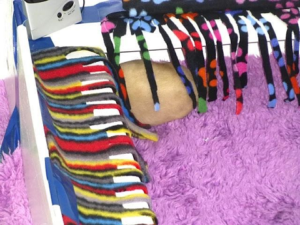
The puppies’ sense of smell is developed from birth in order to find their mother for food. Use these early weeks to introduce new scents, and move the scent box around the den to provide some directional variety.
If your program finds certain scents are a common concern in puppy program or training, these scents or milder versions can be introduced to puppies in the scent box if they are non-toxic. For example, if the training department reports that bird feathers along their routes are a common concern, down feathers can be placed inside the scent box. Milder versions of scents such as liquid used for candles or soaps can be added to a cotton ball and placed in the scent box. A little goes a long way with scents, only a drop or two of the liquid is needed.
Do not use strong fragrances, instead use light and calming essential oils or similar. Remove at night if the den is not supervised.
If the brood is not able to have a scent box in the whelping box, one can hold the scent box and walk through the room.
During the first two weeks, the puppies’ eyes begin to open. As their vision develops, different shapes and patterns are beneficial. Wall decals or wallpaper with different shapes and objects can be applied to a wall in the litter’s room. Many decals labeled to be easily applied and removed so decals can be easily rotated to add variety.
Interactive Activities
The activities below can be done in a clean room or right outside of the whelping box. If done in a separate room, make sure Mom goes along to support the puppies. Place a blanket or other non-slip material on the floor where the puppies will be to help with their traction as they explore the objects. Pick on activity to work on at a time. Place items on the sheet and allow puppies to explore the items on their own. Make sure to keep the activity short, no more than 15 minutes. Continue to massage puppies each day following the protocol below.
Acceptance of body handling is a skill that is introduced during the first week. The pup needs to build positive associations around handling all parts of its body. To achieve this we use massage. Age appropriate massage will only last 1 minute for the first 7 days.
Body massage Protocol
- Pup is placed on its stomach on a soft towel in your lap. Take two fingers and start massaging in a very small circle. Massage both body and appendages. Remember not to massage pups ears yet as they are not opened – leave ear massage until 2 weeks of age.Tip: If the puppy is calm, use clockwise circles. If a puppy is finding it difficult, use counterclockwise circles.
- Slowly turn the puppy onto its side and continue massaging. This stage is only initiated if the puppy is accepting this change in position. STOP here if the puppy is communicating signs of distress such as a large yawn, whimpering or excessive wiggling.Note: If the puppy is not showing signs of distress, slowly turn the puppy onto the other side and continue the small circle massage.
- Slowly return the pup so it is on its stomach and continue the small circle massage.
- Finish off with long smooth movements across the body.
As puppies grow, it is important to introduce them to positive body handling. One way to accomplish this is with massage. Below is the age- appropriate amount of time per puppy.
| Age of Puppy | Time |
| 0-7 days | 1 minute |
| 8-14 days | 5 minutes |
| 15 days and older | 10 minutes |
